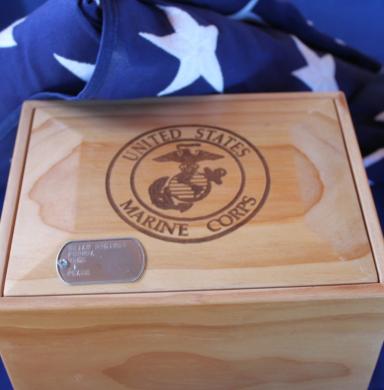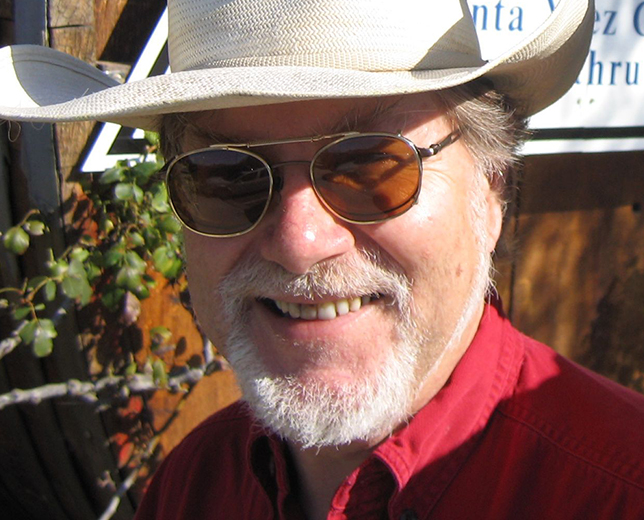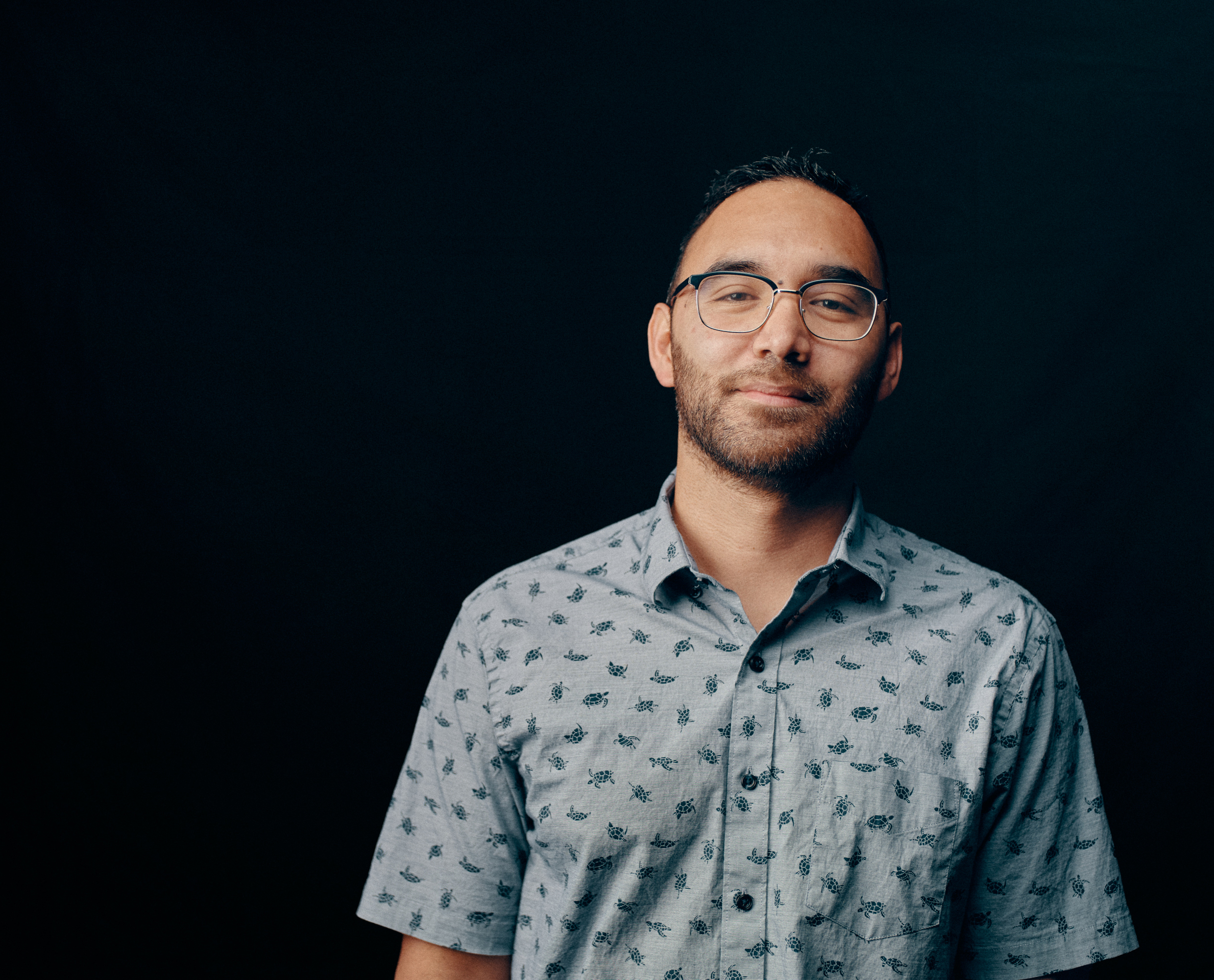From Pizza Origins to Veterans’ Legacies and Art Forgeries, CAHSS Professor’s Eclectic Interests Bring History to Life
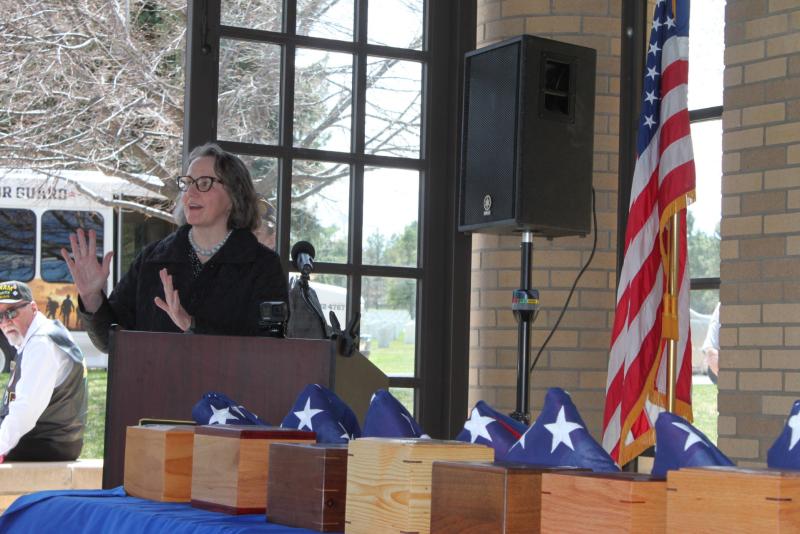
Professor Carol Helstosky speaking at “Final Roll Call” ceremony honoring veterans inurned at Fort Logan National Cemetery, April 17, 2024.
Exploring the Intersection of History and Food
A studious child and devoted public library fan whose eclectic interests ranged far and wide, first-generation History Professor Carol Helstosky attributes her lifelong fascination with the power of food to spending time in her father’s restaurant in Newington, Conn.
“I could see how food always meant something much more than just sustenance,” she said. “It was a way of celebrating family, caring for the community.”
After earning a degree in literary studies from Trinity College, Helstosky received a PhD in Modern European history from Rutgers University, where her interests turned to the World War I era and the rise of fascism in Italy, specifically the role food played.
“This was in the early 1990s and food history just wasn’t a thing,” she explained. “But in the late ‘90s more people became interested, and the field exploded in the 2000s.”
As a graduate student, Helstosky lived in Rome for a year and Florence for a year absorbing Italian culture. She later received the prestigious Rome Prize fellowship to study at the American Academy in Rome from 1999-2000.
Her dissertation “Garlic and Oil: Food and Politics in Modern Italy” later became her first book, focused on food policies set by the Italian government “and how food becomes political when there isn’t enough to go around,” she said.
The book led to writing “Pizza: A Global History,” described by Helstosky as “the most fun I’ve ever had doing research.”
She became an unwitting “go-to” expert on pizza history and still receives media inquiries such as “‘this guy claims he made the first Hawaiian pizza — is that true?’” she said, laughing. “As if I could determine that with any degree of accuracy.”
Helstosky subsequently penned the thematically related “Food Culture in the Mediterranean.”
Her most recent book, Italian Forgers, slated to publish in May 2024, concerns the unusual prevalence of forgeries in the Italian arts and antiquities market from the 1860s through the fascism era. She credits the CAHSS Dean’s Award for Excellence (DAFE) she received in 2016 with helping support her research.
Bridging Past, Present and Place
Following graduate school and working for a year as teaching assistant professor at the University of Pennsylvania, Helstosky landed a job teaching Modern European history in the University of Denver’s College of Liberal Arts & Social Sciences (CAHSS) Department of History in 1997. She currently teaches an entry-level class on World War I.
“It’s a very popular, fun class where students work in the library with the First World War Portal, a fantastic digital database that includes textual and visual sources including oral histories and three-dimensional objects.”
Her longstanding course on the rise of fascism in Italy followed by Germany has evolved to address rising fascist movements in our world today. She also continues to teach her class on food history.
The class relies on DU’s Special Collections & Archives which includes an enormous collection of culinary history and cookbooks, according to Helstosky. Students spend three weeks in the archives and pick a particular topic to research and write a paper on.
Bringing Veterans Legacies to Life
Helstosky’s courses related to the Veterans Legacy Program began as a hallway conversation with close History Department colleague Associate Professor Elizabeth Escobedo. They continue to spawn new partnerships with the U.S. Department of Veterans Affairs (VA) along with hands-on student research opportunities.
The director of the Veterans Legacy Program that commemorates the lives of veterans buried at national cemeteries invited the two professors to establish a research-based curriculum around veterans buried at Denver’s Fort Logan National Cemetery several years ago. They subsequently applied for and received a contract beginning in 2017 and expanded the program over the next three years under renewed contracts.
The two taught classes and sponsored students to research and write profiles on the lives of extraordinary veterans. The profiles addressed previously suppressed topics such as racism, women’s service and veterans missing in action who were relocated or inurned domestically. Students included photos of veterans, family members and artifacts to help humanize unsung individuals.
"Working with Carol on community-engaged projects surrounding the veteran community has been a highlight of my faculty career,” Escobedo said. “She goes above and beyond, to build relationships with local veterans and to create opportunities for students to work with veteran organizations to preserve their stories. These intergenerational interactions provide students with experiences they'll draw from long after they've graduated."
The two professors' efforts resulted in the website More than a Headstone, a collaboration between the Department of History, Fort Logan National Cemetery and the United States Department of Veterans Affairs (VA).
The most recent Honors Burial Project involved students in Helstosky’s “Issues in Comparative History” class helping VVA (Vietnam Veterans of America) Local 1071 to research 27 veterans whose unclaimed, cremated remains were found in a local funeral home. Students recently met with members of the VVA to share what they discovered. Most of the unclaimed veterans had served in World War II, several had achieved high military ranks and one had been awarded a Purple Heart.
“With some very basic starting information, the students, under Carol's guidance, produced detailed biographies on all of these veterans,” said Bill Bridges, director, Honors Burial VVA Chapter 1071. “This was a very complex project and Carol's leadership gave our ‘lost veterans’ an image and a way to be better remembered for their service to our country,” he said.
He added that “a few lines do not carry the impact that Carol has on those around her. She is highly committed to all projects that she works on and she has a special rapport with her students.”
Helstosky pointed out that “most of our students are not veterans but they might have friends or family members who served. This research enables them to better understand military service and the veteran experience.”
Former student Andres Osuna, a history and socio-legal studies major, said Helstosky encourages students to “get to the heart” of a veteran’s story. “People tend to think of veterans as more of an idea than actual people with real emotions, feelings and families,” he explained. “She pushed me to recognize more about the veteran’s personal history.”
Her advice enabled him to locate family members and create a fuller picture of who each veteran was. “Professor Helstosky recognizes the importance of acknowledging the humanity of all over reducing them to facts on a piece of paper,” Osuna added. “She inspired me to continue research where I can prioritize human experiences over information that can be recited from a textbook.”
Fellow student Bree Parsons, a history and political science major, admitted that she was “more uneducated than I knew about veterans and how diverse their experiences were. Professor Helstosky did a magnificent job displaying the complexity of a veteran's experience. This class showed me the intricacies of individual experiences that make history a discipline which is endlessly complex and fascinating.”
Inspiring Fellow First-Gen Students to Reach for Their Dreams
Helstosky’s year spent serving as the first official faculty director of the CAHSS First Generation Mentoring Program from 2021-22 also sprang from a conversation with Escobedo.
“I had read an editorial in “The Chronicle of Higher Ed” about a first-gen mentorship program and mentioned it to Liz,” Helstosky said. “She subsequently piloted a first-gen mentoring program in CAHSS in 2020 through 2022.”
The program provides CAHSS undergraduate first-gen students, faculty and alumni with mentors — many of whom are likewise first-gen — to help them achieve college and career success.
“Because I was a first-gen student, I understand imposter syndrome and how students might have self-doubts or lack confidence in their abilities,” Helstosky said. “I still enjoy advising them about how to fulfill certain requirements and reassuring them that if I could do this, they can, too.”
Escobedo has nothing but praise for Helstosky’s contributions. "She's whip smart and compassionate, a staunch advocate for students and faculty alike,” she said. “So many benefit from her wise counsel and mentorship."
Helstosky continues to derive pleasure from her diverse teaching roles. “I really love helping students find meaningful ways to engage with the past whether they’re looking up things on a database, interviewing a veteran family or taking on a thesis project,” she said.
She added that “Having the [unexpected] opportunity to serve the veteran community by engaging students deeply in meaningful research has been truly gratifying.”
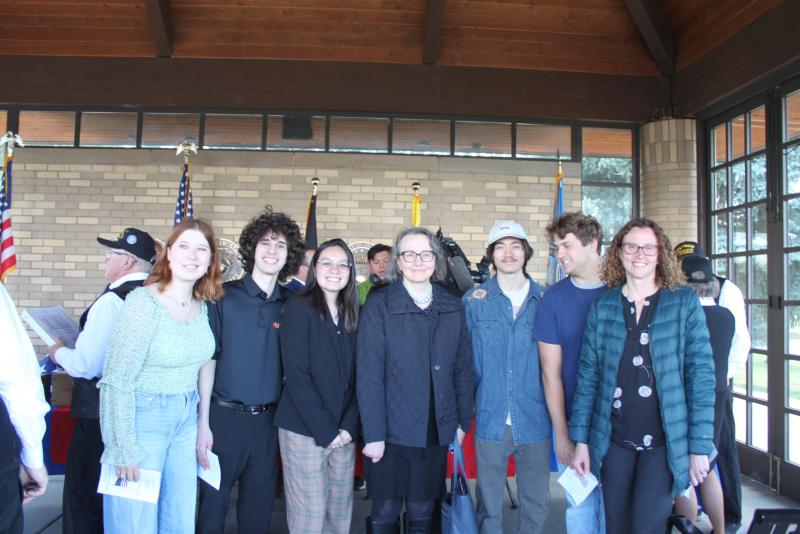
Professor Carol Helstosky (center) and Associate Professor Elizabeth Escobedo (far right) with undergraduate students at “Final Roll Call” ceremony.
